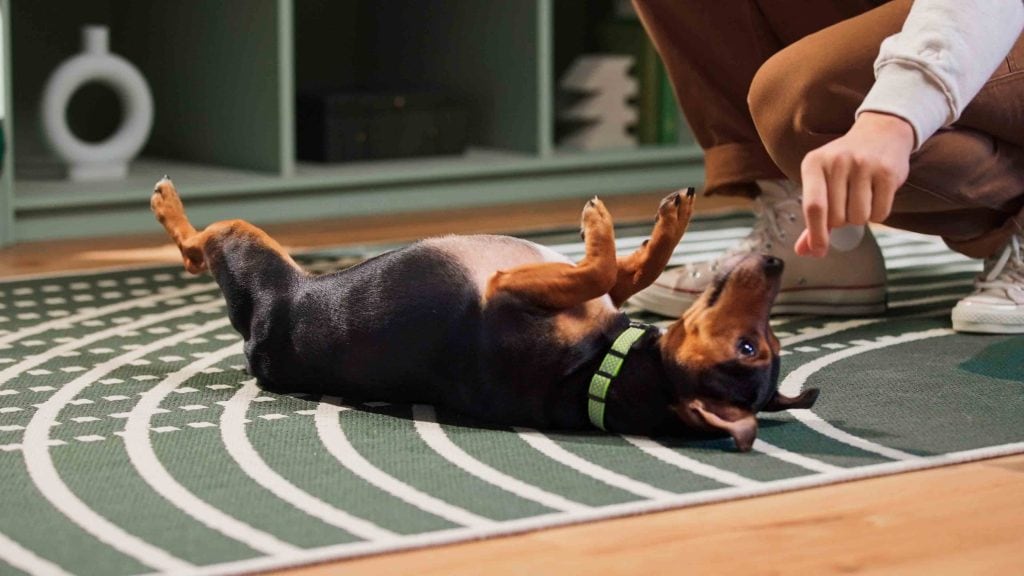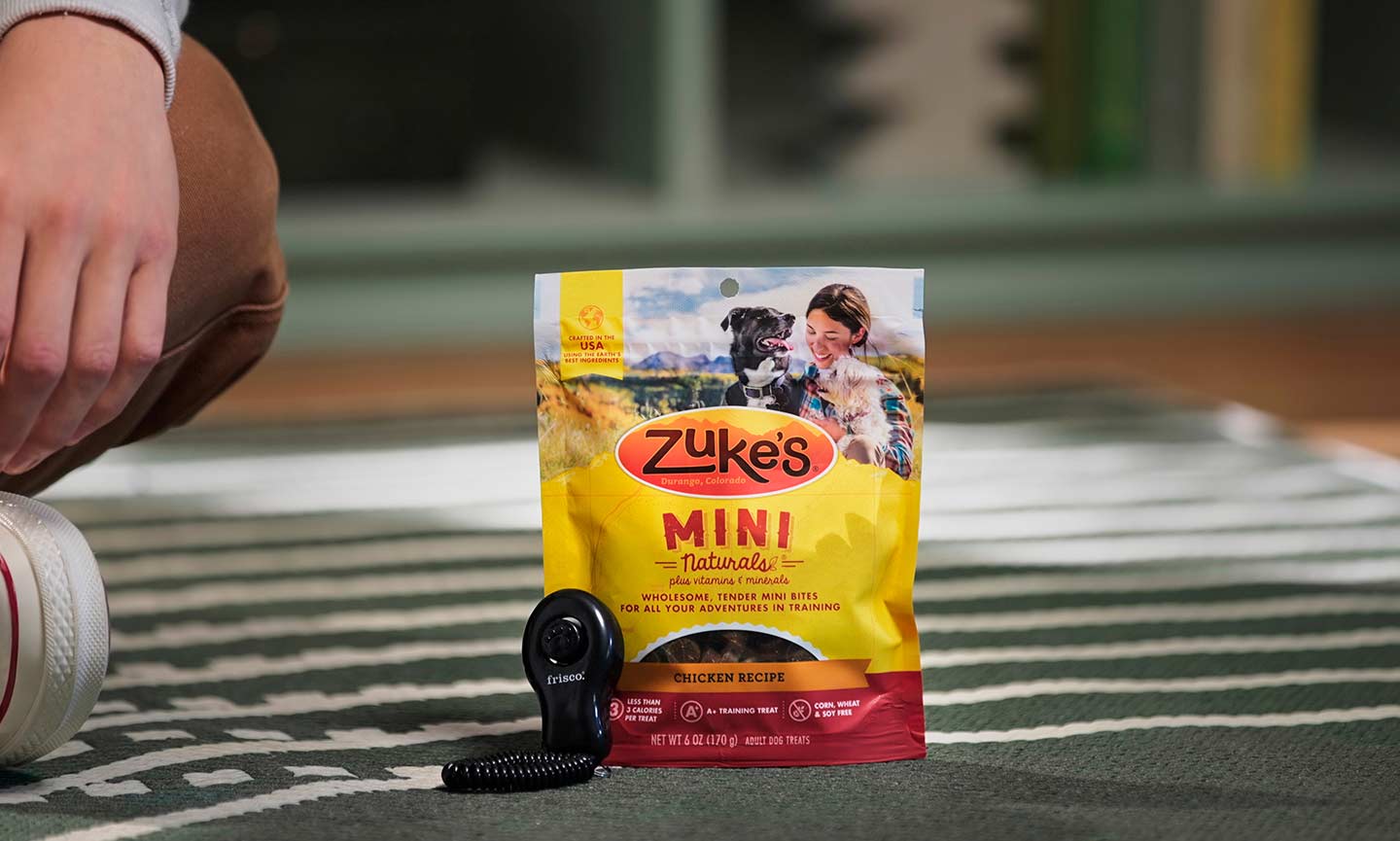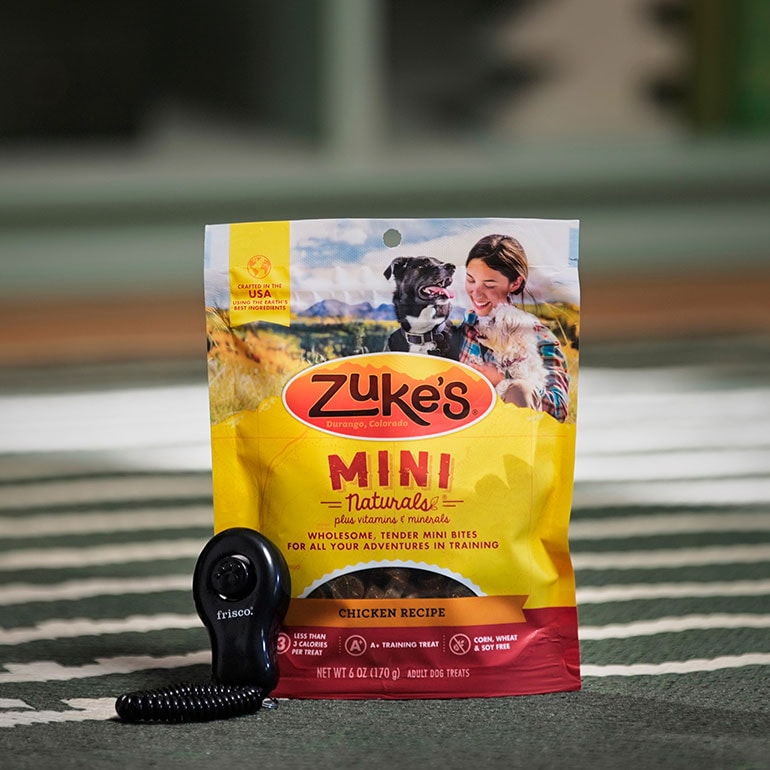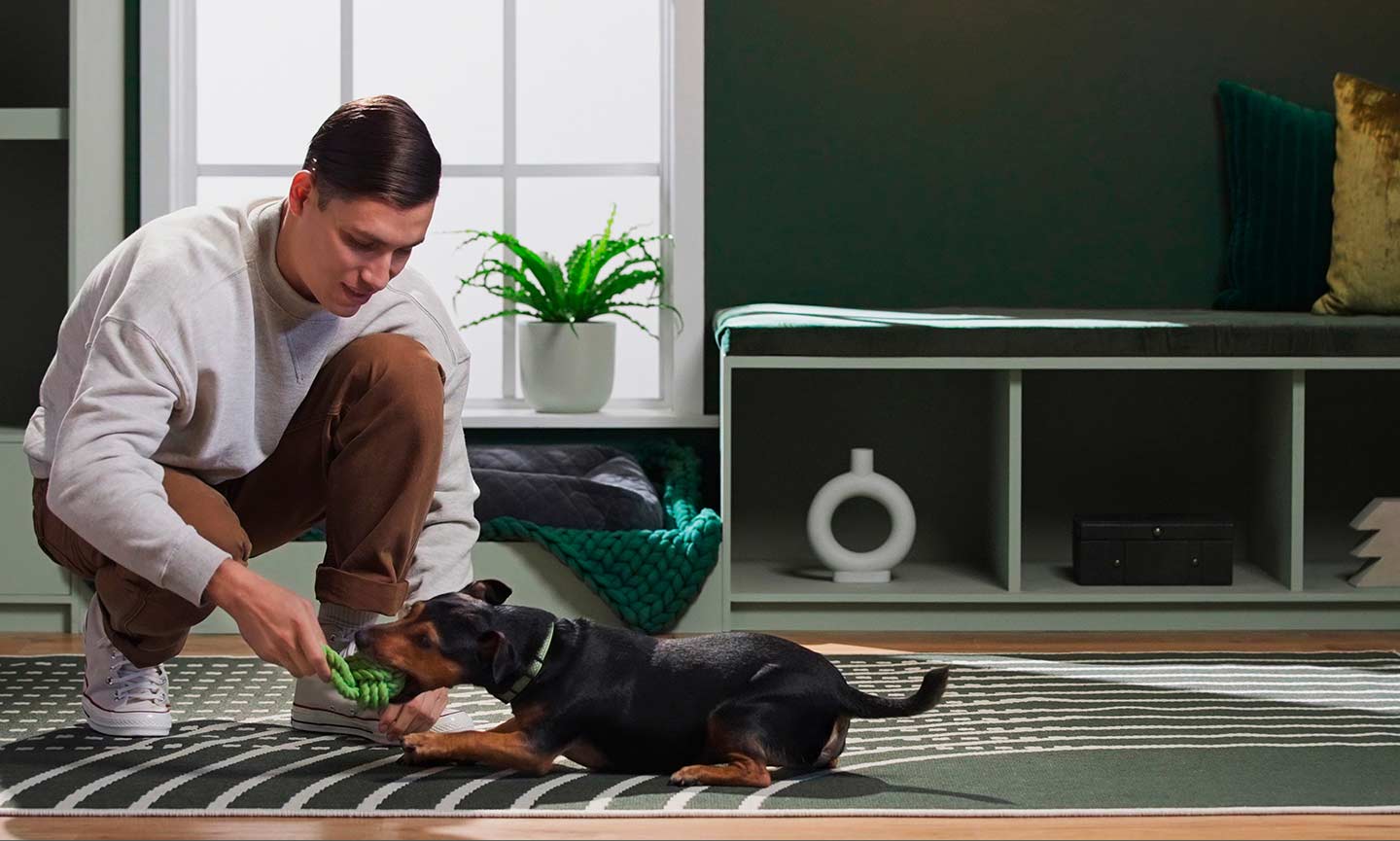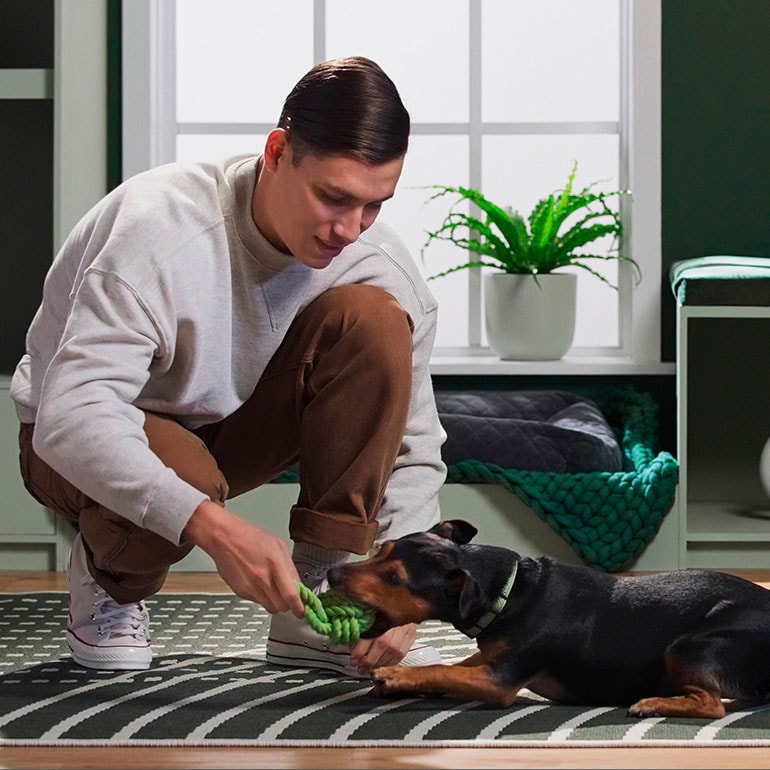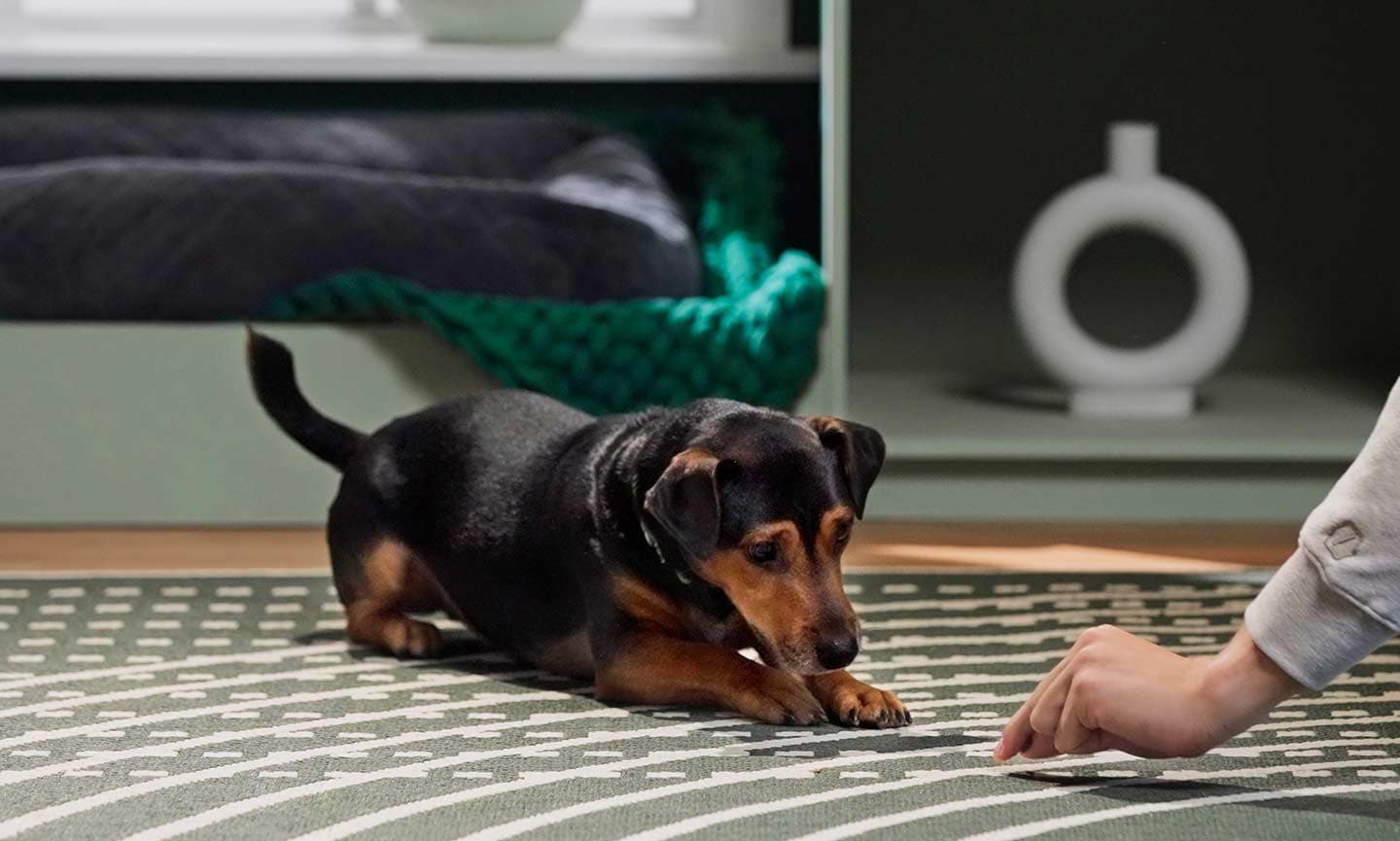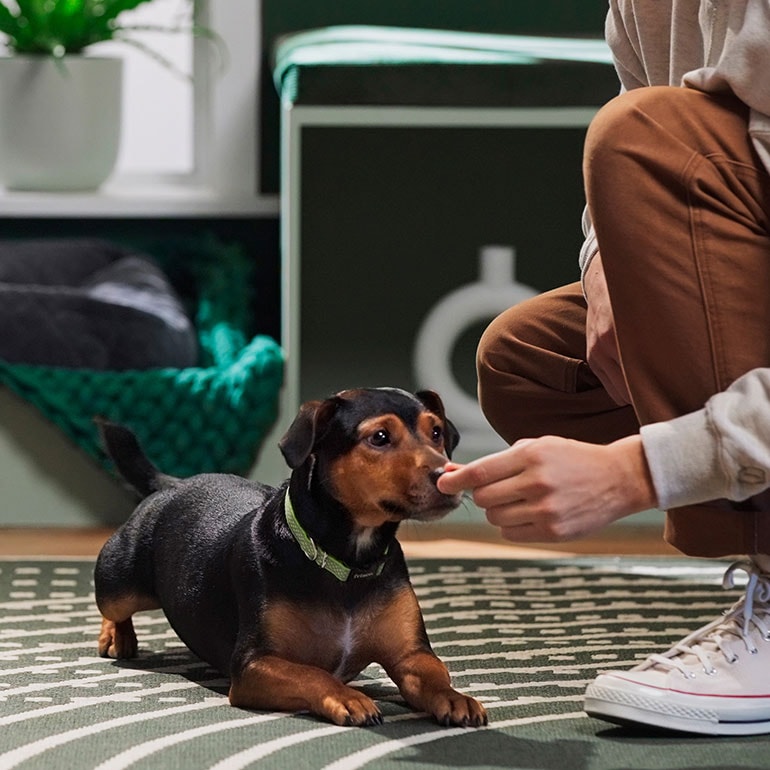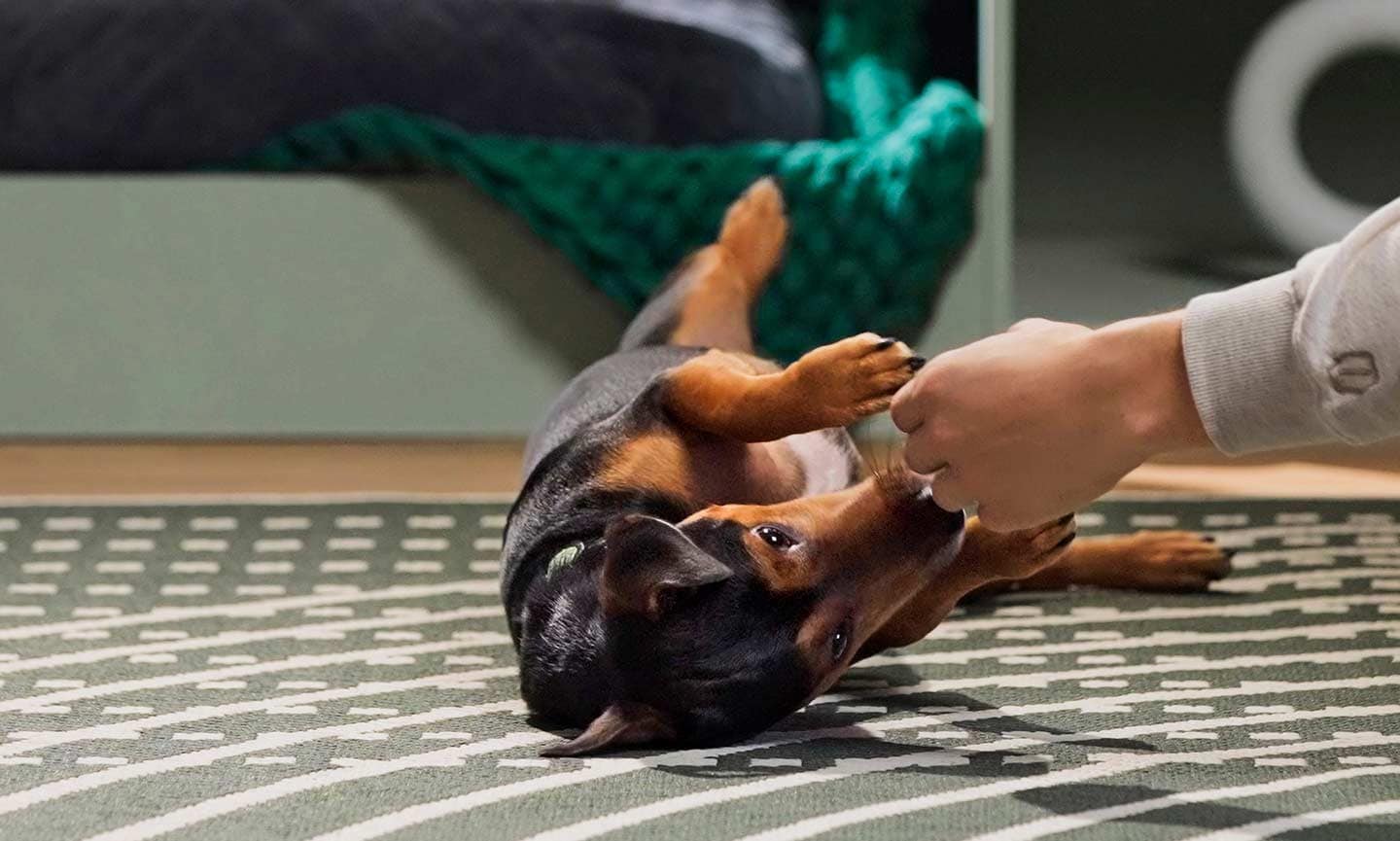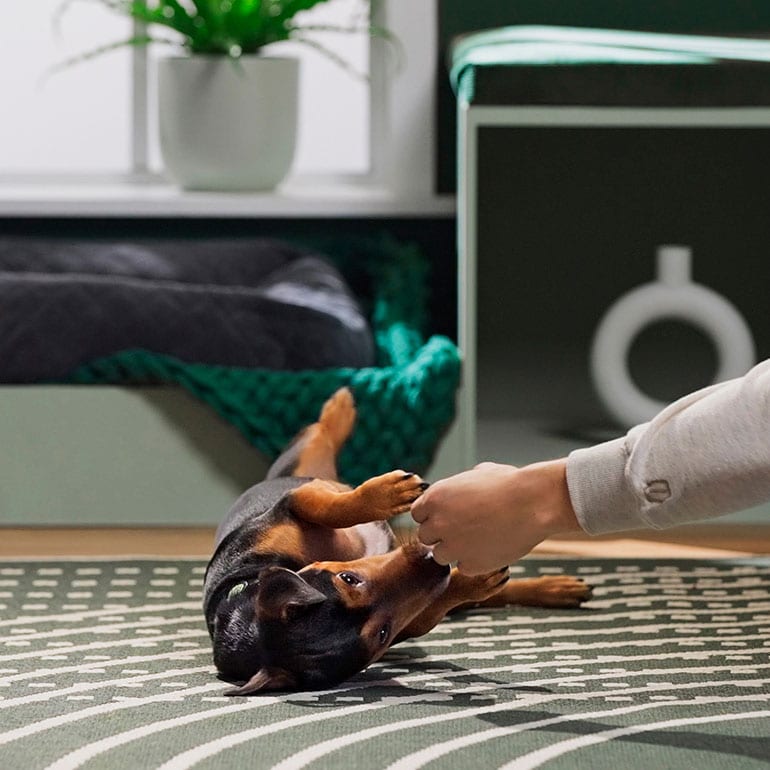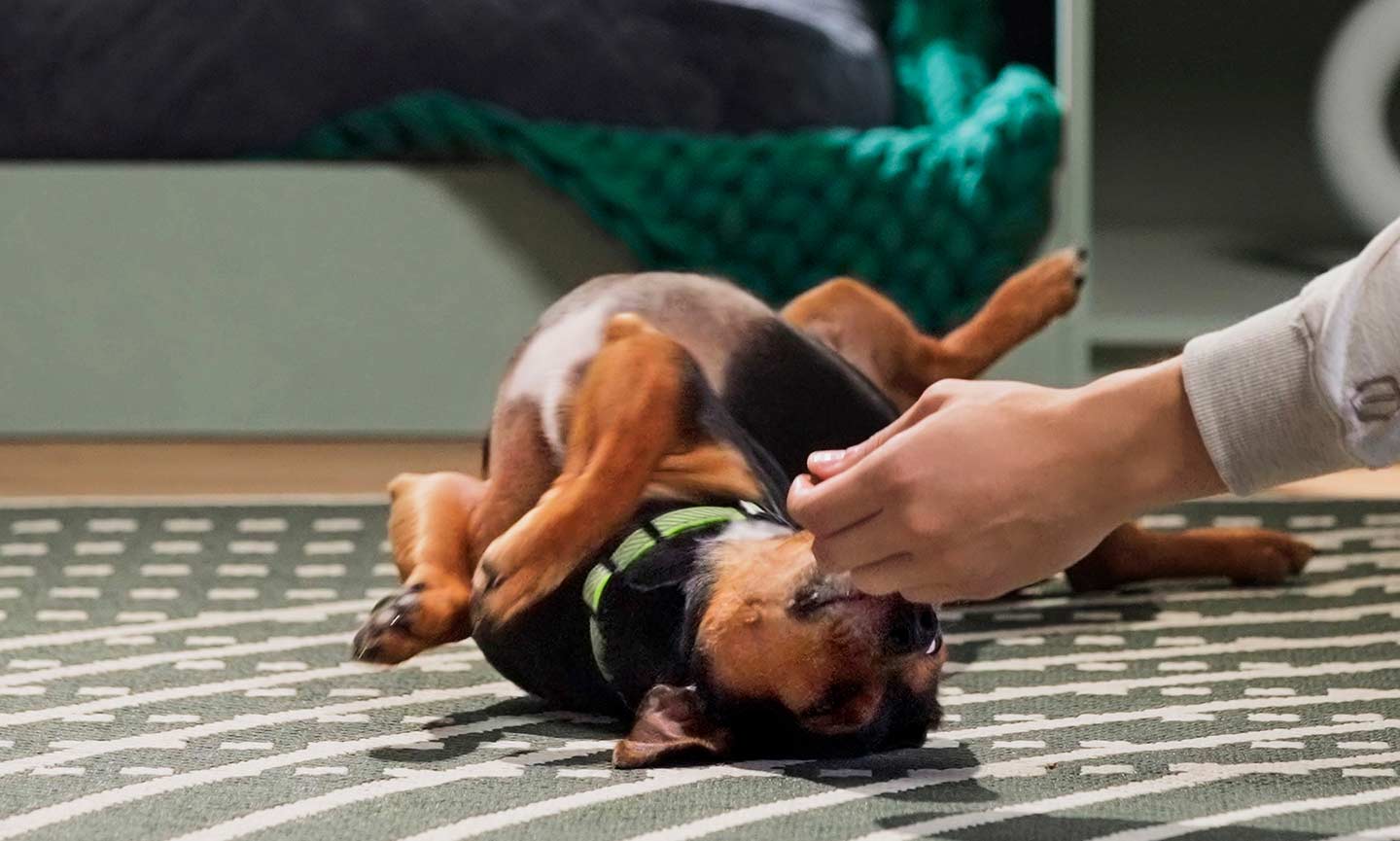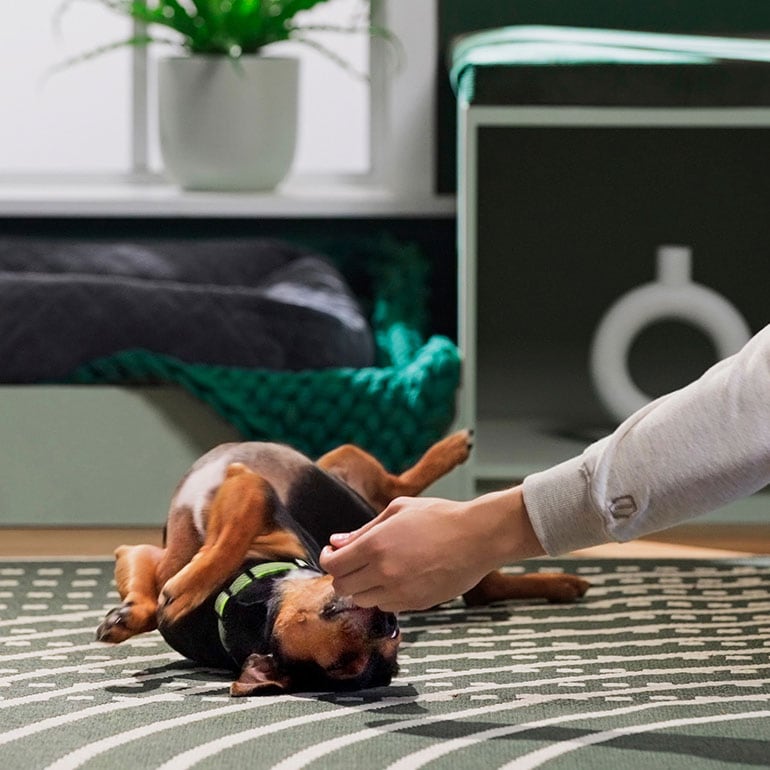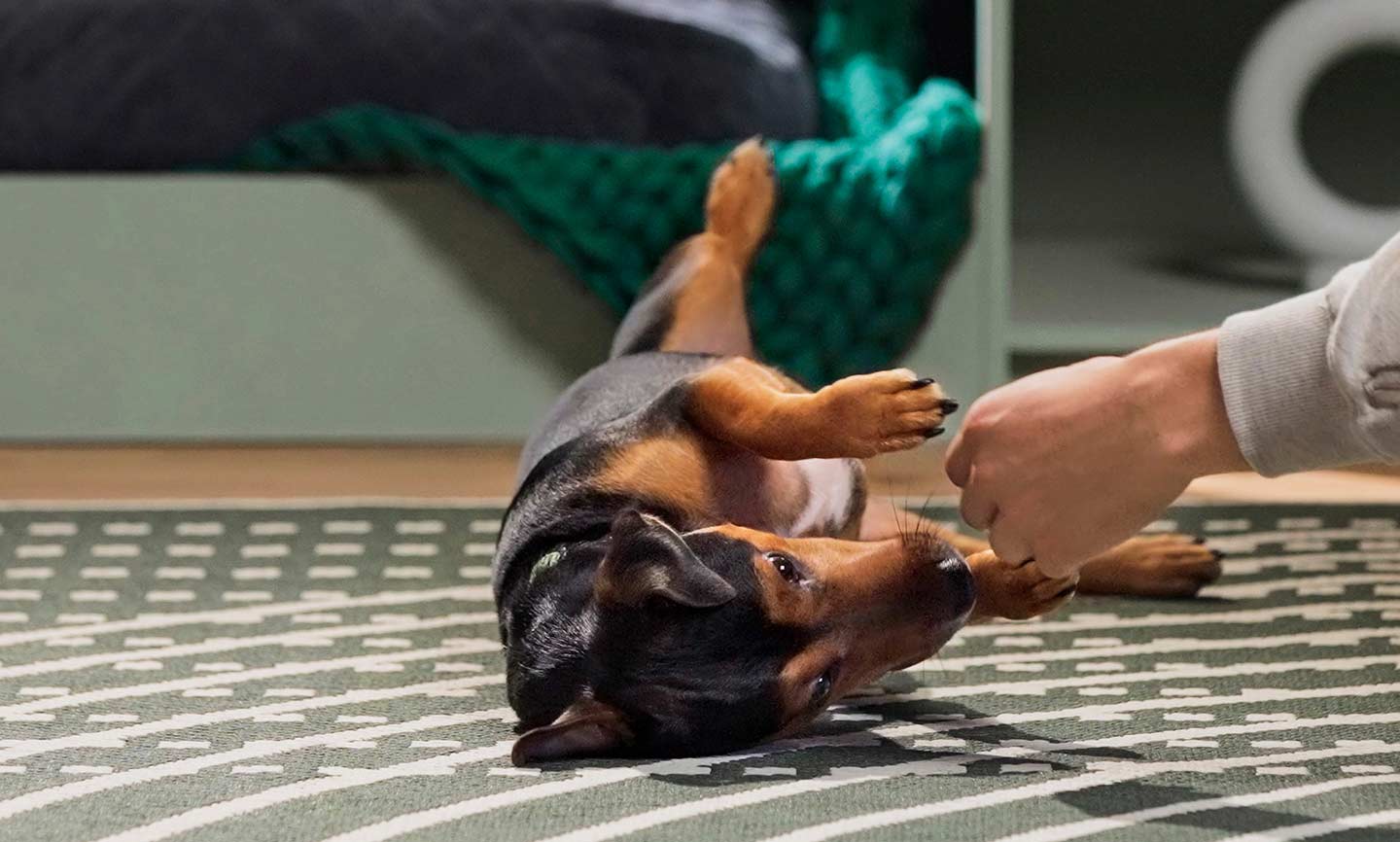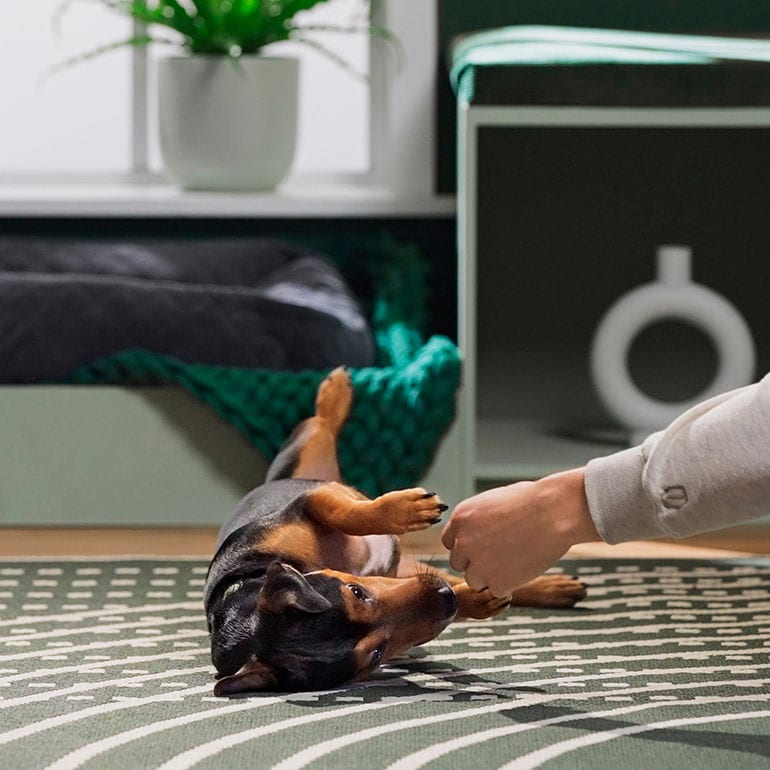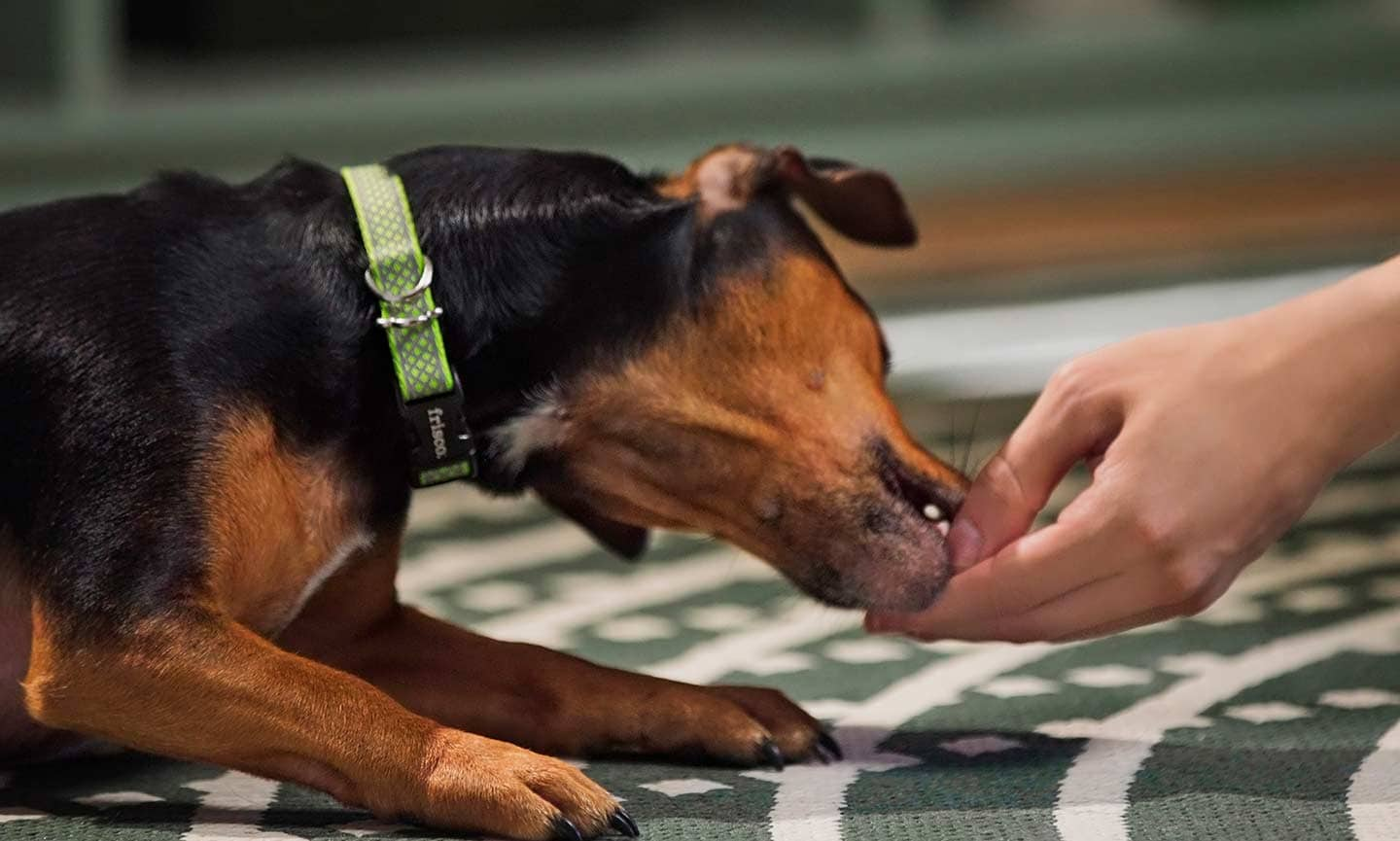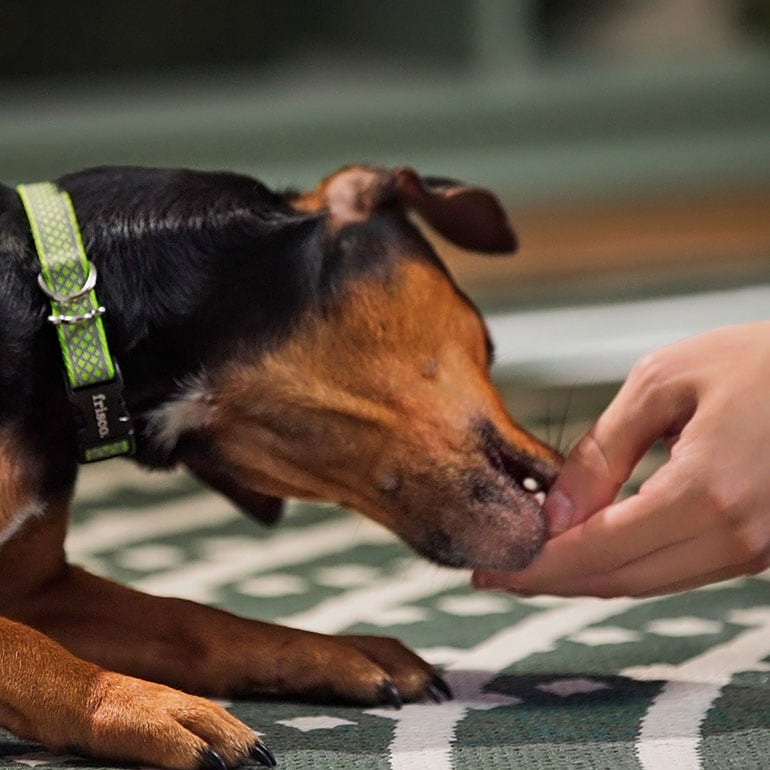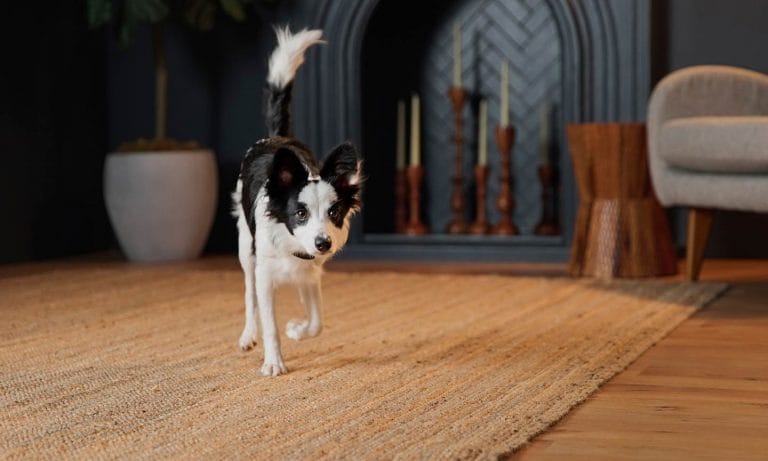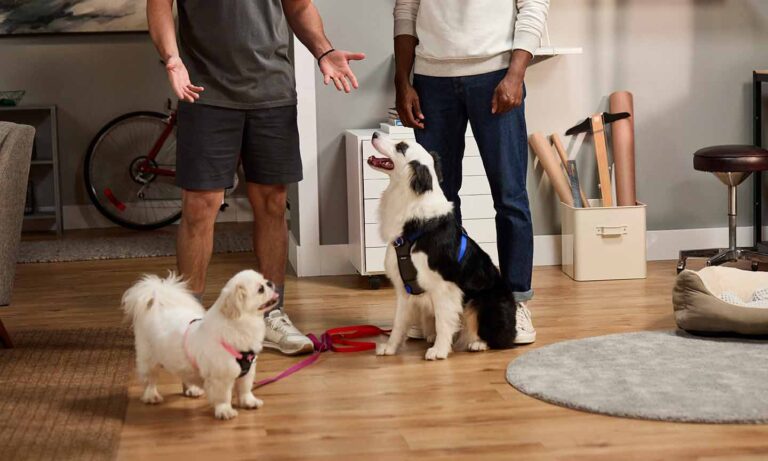You Will Need
✓ A quiet space
✓ Training treats for dogs, like Zuke's Mini Naturals Chicken Recipe Training Dog Treats
✓ Clicker trainer tool, such as Frisco Pet Training Clicker with Wrist Band (optional)
✓ 15 to 30 minutes per day
✓ Patience
✓ Enthusiasm
7 Simple Steps to Teach a Dog to Roll Over
“Roll over” might seem like a complex behavior for you to teach, but if you break it down into baby steps, your dog will be showing off their adorable new skill in no time. Note that this training technique, provided by certified dog trainer Irith Bloom, CPDT-KSA, of The Sophisticated Dog in Los Angeles, California, assumes your dog already knows the “lie down” cue.
1Start in a quiet space.
When learning how to teach a dog or puppy to roll over, it’s best to do so in a quiet area where there are minimal distractions. This will help your pup focus on the task at hand so they can more quickly learn and perform the trick.
2 Ask your dog to lie down.
Give your dog the "lie down" command. Once your dog is in the lying position, determine which way their body is leaning. For example, if the dog is lying with their left leg out, they’re primed to roll over to the right. If you try to roll the dog the other way, it will be very difficult since the left leg will be in the way.
3 Holding a treat close to your dog’s nose, “draw a circle.”
Hold a treat your dog loves in front of your dog’s nose, making sure it’s pressed firmly between your thumb and forefinger so they can’t get it away from you. (Zuke's Mini Naturals Chicken Recipe Training Dog Treats are a great option thanks to its small size and tastiness.) Very slowly, and keeping the treat very close to your dog’s nose the entire time, “draw a circle” in the direction the dog should be rolling. If your dog straightens up or stands up, get them back into the down position and then try again.
4Reward your dog with a treat for rolling over.
Wait until your dog rolls all the way over, and then praise and feed the treat you were using as a lure. If your pup is having trouble rolling all the way over, praise and feed the treat a couple of times as soon as they wind up on their side, then go back to trying to get the whole roll-over movement.If your dog won’t even roll onto their side (and is physically OK to do so), tip the dog as far as you can to the side, praise them, and then feed the treat. Do this only a couple of times before holding out for more movement, otherwise your dog can get stuck at that level.
5Repeat without treats.
Once your dog is rolling over reliably as you guide them with the treat lure, do a repetition with an empty hand. Pretend you’re holding a treat and move your hand the same way as before. As soon as your dog rolls over, praise, and then grab a treat from nearby—a closed container of treats at your side works—and reward your dog with the treat. Do this until your dog is reliably following your hand movement even when you are not holding a treat.
6Begin using the “roll over” cue.
Now you can introduce the “roll over” command. To seamlessly transition, say “roll over,” count to three, and use the hand movement to guide your dog through the rollover. When your pup successfully completes the roll, praise them, then give them a treat. Repeat this three times. On the fourth go, count to four before moving your hand and repeat. Then count to five before moving your hand.
Continue in this pattern, saying the roll over cue, pausing for a count of whatever number you’re up to, then doing your hand movement. Do this until you notice your dog starts to roll over almost before you give the hand signal. Keep practicing with longer and longer counts until your dog is rolling over when they hear the verbal cue and no longer waits for your hand movement at all.
7Practice, practice, practice.
After your dog has mastered the “roll over” command, continue to practice several times a week, at least, to keep the behavior fresh. Sometimes dogs can “forget” what they learned even after doing well for a while. If this does happen, go back to using the hand signal after you say the word for a few repetitions, to give your dog a refresher.
Things to Avoid
When teaching a dog to roll over, avoid the following:
- Forgetting to check with your veterinarian first: Make sure your dog is approved for the roll over command. Dogs with physical ailments (including spinal, muscular, skeletal, or other issues) should skip this trick and try something else.
- Training in a cluttered space: Think carefully about when and where you are teaching a dog to roll over. For example, don’t ask your dog to roll over on a bed or couch since they could roll right off the edge of the furniture. You also don’t want your dog to accidentally roll into the wall, a chair or any other object. Also, some dogs may also be uncomfortable rolling over on a hard floor.
- Forcing your dog to do the trick when they aren’t comfortable: Pay attention to your dog’s behavior as you train, and make sure to ask your dog to roll over only in situations where they seem physically comfortable. Because a body roll puts your dog in a vulnerable position, stick to doing this trick indoors and away from other dogs or strangers. Also, remember to watch for signs of soreness and stop practicing if rolling over seems to be hurting your dog.
How to Teach a Dog to Roll Over FAQs
Q:
Can I teach a dog to roll over without treats?
Q:
Can I teach a senior dog to roll over?
Q:
Is it dangerous for dogs to roll over?
Q:
If my dog can’t roll over, what do I do?
The Bottom Line
Knowing how to teach a dog to roll over is a fun and playful trick that allows for memorable bonding time together. But reserve this one for nimble canines, and prioritize positivity and joy over everything else. If you find yourself frustrated, it’s time to move onto something else for the day and try again tomorrow. It may take time, but once your dog has nailed this cute new party trick, you can give yourself a pat on the back for earning a new notch in your dog trainer belt.
Looking for more fun obedience tricks? Check out our step-by-step guides to the post popular dog commands.
Expert input provided by certified dog trainer Irith Bloom, founder of The Sophisticated Dog.
More Dog Training Tips
Share:
